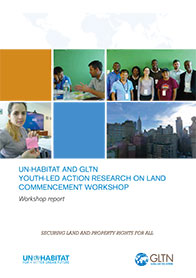Youth-Led Action Research on Land Commencement Workshop
The land challenge is central to the broader youth dynamics of migration, employment, livelihoods and belonging. The more than 1.8 billion youth living worldwide represent not only a land challenge, but an untapped potential in moving the tenure security agenda forward.
Youth-led Action Research on Land builds on previous youth and land engagement and consultations that have identified critical needs and knowledge gapsin the space of youth and land.





